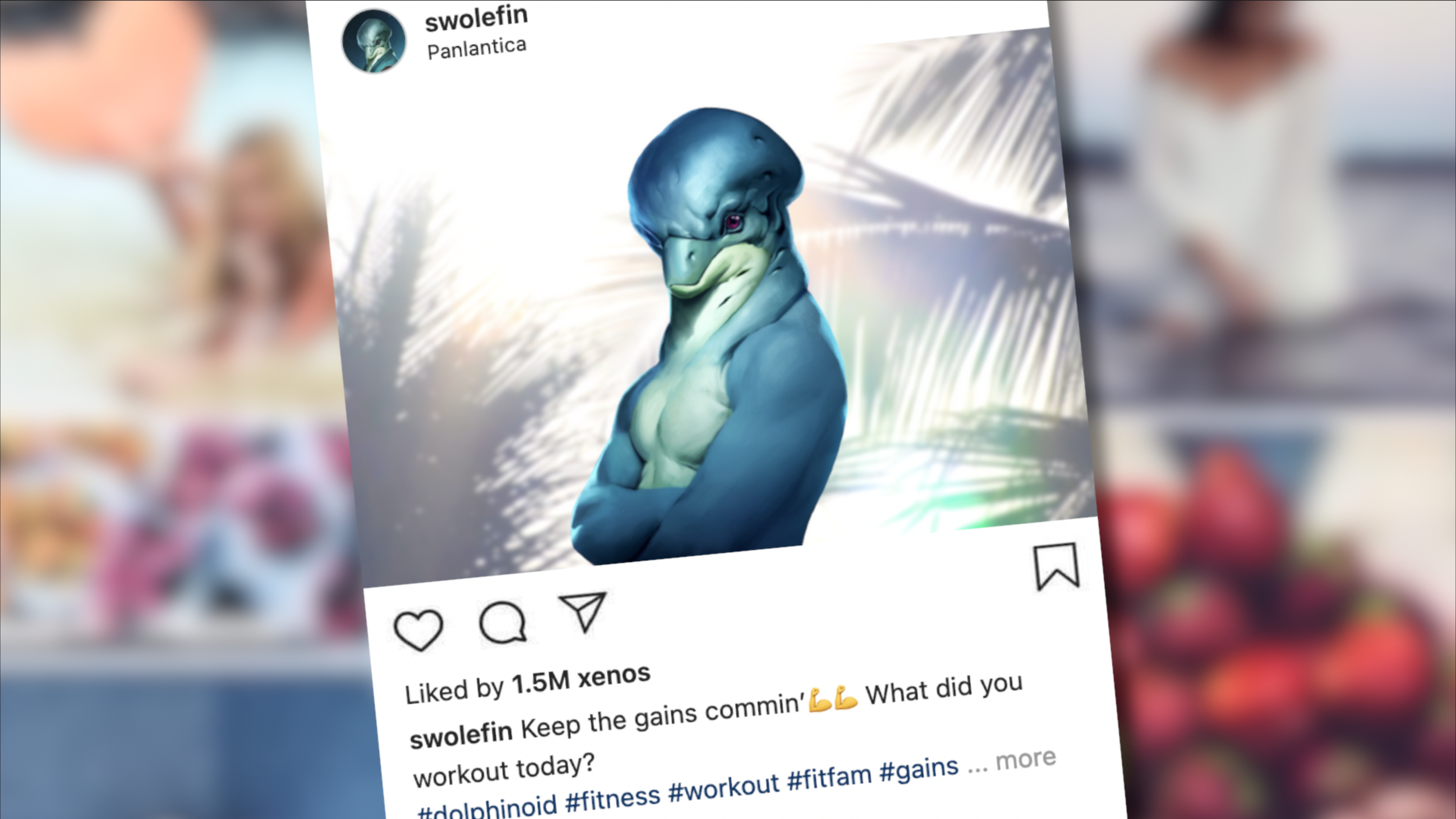From a very young age, we are expected to live up to unrealistic beauty standards set upon us by society, largely through social media which promotes the idea of the ‘perfect’ xeno.
In this case, ‘perfection’ tends to be defined by a never-ending list of requirements like having a torpedo-shaped body, bulbous head, flippers, tail fins and a blowhole.
These standards are portrayed endlessly on platforms like Instagram, where we are bombarded with curated images of ripped dolphins larking around a coral reef or indiscriminately bullying porpoises.
While we may think looking at such pictures is harmless, our subconscious is soaking it all up – and before we know it these perfectly formed cetacean bodies are the standards by which we measure everything else.
Image: Dolphinoid fitness posts are frequently found on social media sites.
The fundamental flaw? Living the perfect marine life deep diving in brackish waters is completely unobtainable when you’re land-based and lack a non-flexible neck and thick layer of blubber.
More often than not, dolphinoids achieve their appearance due to a combination of genetics, rigorous exercise programs involving near continuous swimming and at times a generous amount of photo re-touching.
We often forget about this. Indeed, a recent study from Earth’s University of Ulm found that when humans spent even ten minutes browsing dolphinoid posts, they became negatively fixed on their own appearance, displaying dissatisfaction at lacking a beak-like snout or uncanny permanent smile.
Such comparisons lead to low-self-esteem, negative thinking and in some cases xenos undertaking extreme action like genetic modification.
But remember – no matter how perfect that ‘swole’ dolphinoid may appear, they too have their own struggles — like taking thirteen times as long as any other xeno to make an Instagram post due to lacking opposable thumbs.
Therefore, I ask that all of us choose to present our ‘normal’ self on social media posts, and stop trying to live up to standards set by inherently sexy, yet imperfect, dolphinoids.






